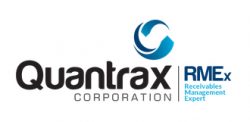
As developers became more comfortable and users looked for more features, we saw the incorporation of dialers, third part interfaces and business rules into collection systems. In addition, most of these systems either ran on proprietary hardware and software, or on standard PC-based systems. Regardless, changes in computer technology forced vendors to make changes to keep up with those advances. Unfortunately, many vendors did not change their core technology design and advertised their ³hardware platform updates² as enhancements.
This did not affect us until we started to approach 2010, when security and compliance became important to everyone. There were rumblings and warnings (e.g. When the FCC almost banned dialers around 2003), but the industry did not take heed. The depth of the problem is clear when you consider the major collection software companies that have struggled to redesign their products. They have announced new products, but for many reasons, they have not been able to successfully deploy them across this user bases. With today¹s requirements, there are many gaps with regard to the features that are required to meet today¹s security and compliance requirements. Sadly, this is familiar story in today¹s technology era. The once successful Blackberry’s loss of market share due to their lack of anticipation of where they needed to be, is a great example of the price you can pay for waiting too long to innovate.
Perhaps this is one reason the collection industry had talked about compliance for so long. Why has it been so difficult to solve the problems? The excuse always seems to be that we have no clear direction or guidelines from the legislators? Did that stop us from establishing our own standards for compliance, and implementing them? It did not. We continue to be a reactive industry. The FCC rulings have changed the collections software landscape. We will be forced to do what we could have and should have anticipated many years ago. Unfortunately, we waited too long. Many companies will find it difficult to bridge some large gaps because major software redesign is difficult and expensive. Collection software vendors will tell you they can do it, and that would be true if we were talking about changing a few programs. This will not be the case. We are talking about major design changes. As an example, consider the rule for calling home numbers before work. What is a home humber? What if you got two potential home (landline) numbers and a cell number at the time of placement? You can see that we have to be able to associate a phone number with a ³type of number². We also need to have the option to try all the numbers we choose to define as ³home numbers², and wait a specified number of days, before we try the work numbers. There is no middle ground for compliance. You pass or you fail. We can not trust agents to follow these guidelines. They have to be managed by computers. There are more design changes needed. There are companies that will start making phone calls on the same day that new accounts are loaded. This means we have to have real-time cell phone scrubbing. Can we all see how software design has to change?
We predict that there will be some failures along the way. Companies that can not address the new requirements will face lawsuits and increased risks. As always, it will give some companies the chance to grow and take advantage of the changing landscape of collection software. Those companies will have one thing in common – They will innovate and invest time and money on technology and process changes.
Ranjan Dharmaraja / CEO
Quantrax Corporation Inc.
